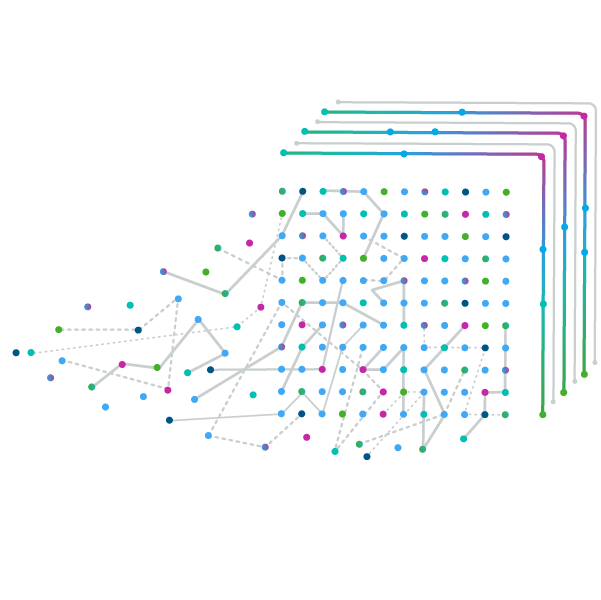Specialized expertise and customized solutions across 14 therapeutic centers of excellence, including oncology, GI/NASH, pediatrics, neurology and rare diseases.
-
Americas
-
Asia & Oceania
-
A-I
J-Z

EMEA Thought Leadership
Developing IQVIA’s positions on key trends in the pharma and life sciences industries, with a focus on EMEA.
Learn more -
Middle East & Africa

EMEA Thought Leadership
Developing IQVIA’s positions on key trends in the pharma and life sciences industries, with a focus on EMEA.
Learn more
Regions
-
Americas
-
Asia & Oceania
-
Europe
-
Middle East & Africa
-
Americas
-
Asia & Oceania
-
Europe
Europe
- Adriatic
- Belgium
- Bulgaria
- Czech Republic
- Deutschland
- España
- France
- Greece
- Hungary
- Ireland
- Israel
- Italia

EMEA Thought Leadership
Developing IQVIA’s positions on key trends in the pharma and life sciences industries, with a focus on EMEA.
Learn more -
Middle East & Africa

EMEA Thought Leadership
Developing IQVIA’s positions on key trends in the pharma and life sciences industries, with a focus on EMEA.
Learn more
SOLUTIONS
-
Research & Development
-
Real World Evidence
-
Commercialization
-
Safety & Regulatory Compliance
-
Technologies
LIFE SCIENCE SEGMENTS
HEALTHCARE SEGMENTS
- Information Partner Services
- Financial Institutions
- Global Health
- Government
- Patient Associations
- Payers
- Providers
THERAPEUTIC AREAS
- Cardiovascular
- Cell and Gene Therapy
- Central Nervous System
- GI & Hepatology
- Infectious Diseases and Vaccines
- Oncology & Hematology
- Pediatrics
- Rare Diseases
- View All

Impacting People's Lives
"We strive to help improve outcomes and create a healthier, more sustainable world for people everywhere.
LEARN MORE
Harness the power to transform clinical development
Reimagine clinical development by intelligently connecting data, technology, and analytics to optimize your trials. The result? Faster decision making and reduced risk so you can deliver life-changing therapies faster.
Research & Development OverviewResearch & Development Quick Links

Real World Evidence. Real Confidence. Real Results.
Generate and disseminate evidence that answers crucial clinical, regulatory and commercial questions, enabling you to drive smarter decisions and meet your stakeholder needs with confidence.
REAL WORLD EVIDENCE OVERVIEWReal World Evidence Quick Links

See markets more clearly. Opportunities more often.
Elevate commercial models with precision and speed using AI-driven analytics and technology that illuminate hidden insights in data.
COMMERCIALIZATION OVERVIEWCommercialization Quick Links

Service driven. Tech-enabled. Integrated compliance.
Orchestrate your success across the complete compliance lifecycle with best-in-class services and solutions for safety, regulatory, quality and medical information.
COMPLIANCE OVERVIEWSafety & Regulatory Compliance Quick Links

Intelligence that transforms life sciences end-to-end.
When your destination is a healthier world, making intelligent connections between data, technology, and services is your roadmap.
TECHNOLOGIES OVERVIEWTechnology Quick Links
CLINICAL PRODUCTS
COMMERCIAL PRODUCTS
COMPLIANCE, SAFETY, REG PRODUCTS
BLOGS, WHITE PAPERS & CASE STUDIES
Explore our library of insights, thought leadership, and the latest topics & trends in healthcare.
DISCOVER INSIGHTSTHE IQVIA INSTITUTE
An in-depth exploration of the global healthcare ecosystem with timely research, insightful analysis, and scientific expertise.
SEE LATEST REPORTSFEATURED INNOVATIONS
-
IQVIA Connected Intelligence™
-
IQVIA Healthcare-grade AI®
-
-
Human Data Science Cloud
-
IQVIA Innovation Hub
-
Decentralized Trials
-
Patient Experience Solutions with Apple devices
WHO WE ARE
- Our Story
- Our Impact
- Commitment to Global Health
- Code of Conduct
- Sustainability
- Privacy
- Executive Team
NEWS & RESOURCES

Unlock your potential to drive healthcare forward
By making intelligent connections between your needs, our capabilities, and the healthcare ecosystem, we can help you be more agile, accelerate results, and improve patient outcomes.
LEARN MORE
IQVIA AI is Healthcare-grade AI
Building on a rich history of developing AI for healthcare, IQVIA AI connects the right data, technology, and expertise to address the unique needs of healthcare. It's what we call Healthcare-grade AI.
LEARN MORE
Your healthcare data deserves more than just a cloud.
The IQVIA Human Data Science Cloud is our unique capability designed to enable healthcare-grade analytics, tools, and data management solutions to deliver fit-for-purpose global data at scale.
LEARN MORE
Innovations make an impact when bold ideas meet powerful partnerships
The IQVIA Innovation Hub connects start-ups with the extensive IQVIA network of assets, resources, clients, and partners. Together, we can help lead the future of healthcare with the extensive IQVIA network of assets, resources, clients, and partners.
LEARN MORE
Proven, faster DCT solutions
IQVIA Decentralized Trials deliver purpose-built clinical services and technologies that engage the right patients wherever they are. Our hybrid and fully virtual solutions have been used more than any others.
LEARN MORE
IQVIA Patient Experience Solutions with Apple devices
Empowering patients to personalize their healthcare and connecting them to caregivers has the potential to change the care delivery paradigm.
LEARN MOREIQVIA Careers
Featured Careers
Stay Connected

WE'RE HIRING
"At IQVIA your potential has no limits. We thrive on bold ideas and fearless innovation. Join us in reimagining what’s possible.
VIEW ROLES- Insights
- The IQVIA Institute
- Reports and Publications
- Reports
- Succeeding with Innovation: The State of Radioligand Therapy Readiness in Europe
Report Summary
Radioligand therapy (RLT) is emerging as an essential pillar in cancer care. It is a targeted treatment approach that has shown clinical benefits in treating gastroenteropancreatic neuroendocrine tumors and advanced prostate cancer. It is also being researched as a promising treatment modality for several other advanced cancers. The scientific innovation in radioligand therapies is progressing rapidly; however, the healthcare system readiness for this treatment modality is lagging. There is a critical and urgent need to enhance the understanding of the current level of readiness for RLT across countries and to address issues impacting this in order to ensure patient access in a timely and equitable manner.
This report aims to further the discussion around RLT readiness in Europe by establishing key levers that should be tracked to assess overall capacity for this treatment. It also provides an initial set of data for these levers for four countries in Europe (France, Germany, Italy and Spain) to highlight the variation in identified capacity across countries and establish benchmarks that can be regularly assessed to prepare for the anticipated increase in radioligand therapy use.
Key findings:
Radioligand therapy capacity framework and key metrics

- Building and sustaining a robust healthcare system that facilitates the use of radioligand therapy for cancer care for eligible patients in a timely manner requires planning across the complete patient journey, from diagnosis to referral to the RLT treatment.
- RLT capacity (i.e., the total number of treatment slots available for RLT in a given year) is impacted by an interconnected set of components that support RLT delivery. The levers are diagnostic capacity, patient referral processes, number of RLT centres/beds, regulatory frameworks and hospital processes, and skilled workforce.
Number of identified diagnostic centres with PSMA capability and share of in-label patients (mCRPC post-ARPI post-taxane) receiving a diagnostic test, 2023

- Three data points can be used to assess diagnostic capacity: Number of centres with appropriate imaging capability, time to diagnostic imaging and percentage of eligible patients receiving diagnosis.
- These data points are used to highlight diagnostic capacity in the current treatment paradigm. As RLT begins to be used in other cancer settings, diagnostic capacity will vary.
Diagnosis to treatment time for lutetium (177 Lu) vipivotide tetraxetan

- The time taken from diagnosis to the beginning of treatment serves as a proxy for the referral process. Minimizing the referral window is imperative in ensuring patients receive timely treatments, especially given the anticipated expansion of patients eligible for RLT treatment.
- Referral processes can impact diagnosis to treatment time. Based on discussions with industry professionals, in France, this time period is estimated at three weeks while in Germany and Spain, it is closer to eight weeks.
Estimated capacity (treatment slots) of identified centres to treat patients using RLT per 100,000 people, 2023

- Overall capacity and infrastructure needs to deliver RLT vary across countries.
- Data on capacity levers from Germany, Spain, France, and Italy are examples and are reflective of disparities across countries in Europe.
You may also be interested in
Developing Efficient Patient Referral Pathways for Radioligand Therapies
Healthcare professional insights from Germany, Italy, France, and China
mRNA Therapies in Oncology: Key Pipeline Developments and Clinical Trial Insights
IQVIA Pipeline Link / Trial Link
Pathway to Success in Cancer Treatment: Achieving Radioligand Capacity and Readiness in Europe
Video of a hybrid event in European Parliament, Brussels, Belgium, April 2024
Impact of tumour genomic characteristics on healthcare resource utilisation and real-world outcomes in patients with non-small cell lung cancer
A real world study using linked whole genome-clinical databases.
Related solutions
Focus oncology development on the patient, manage trial complexity, and increase predictability and speed.











